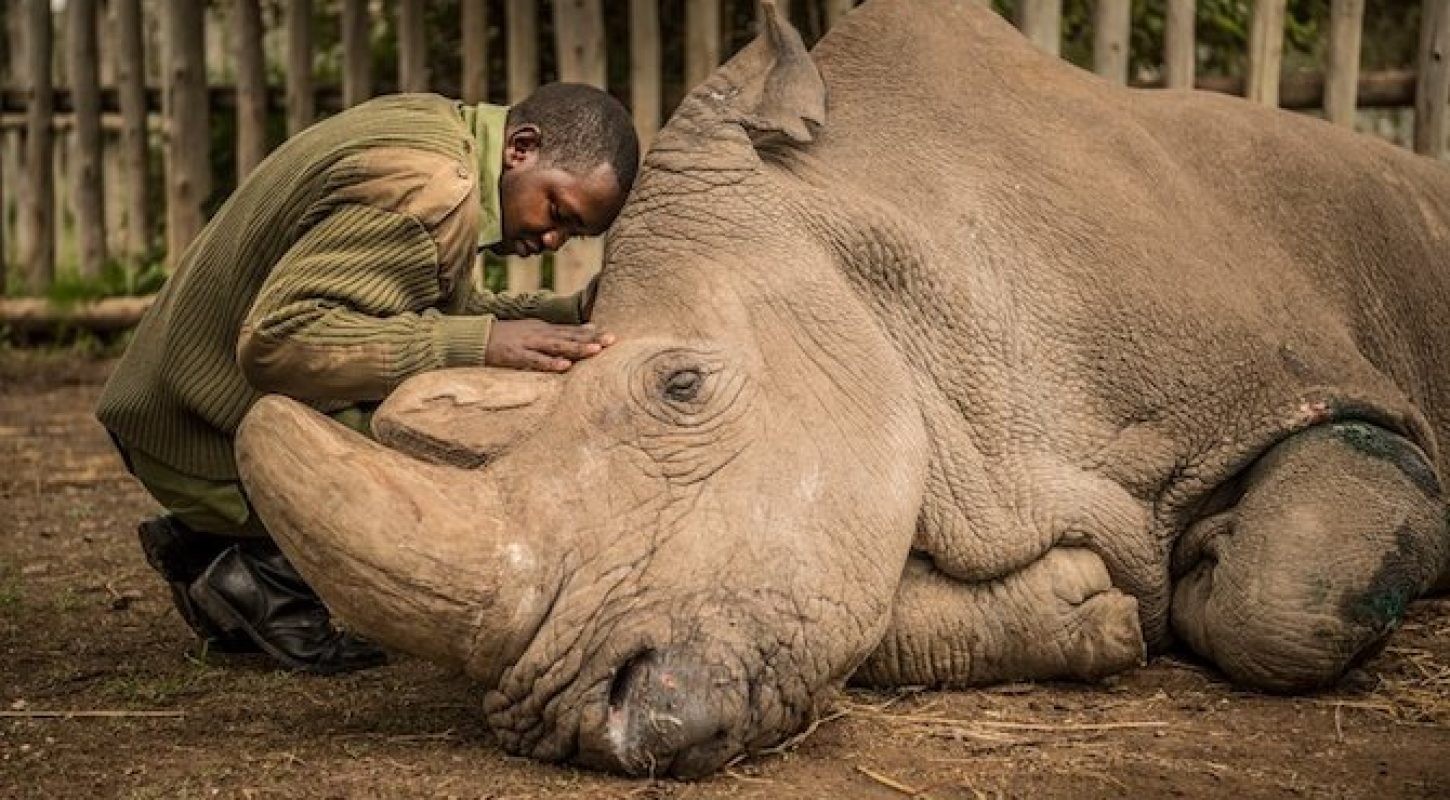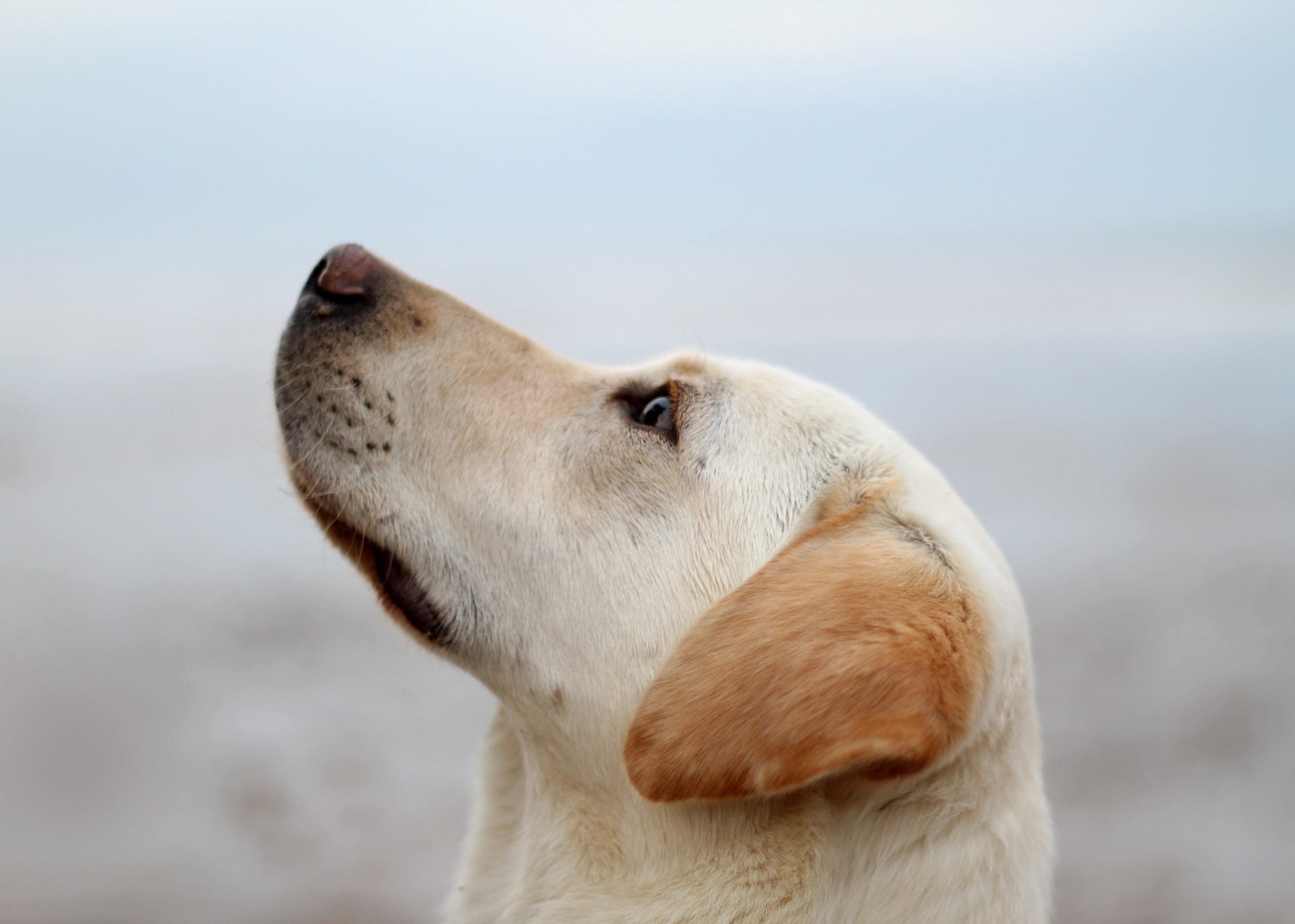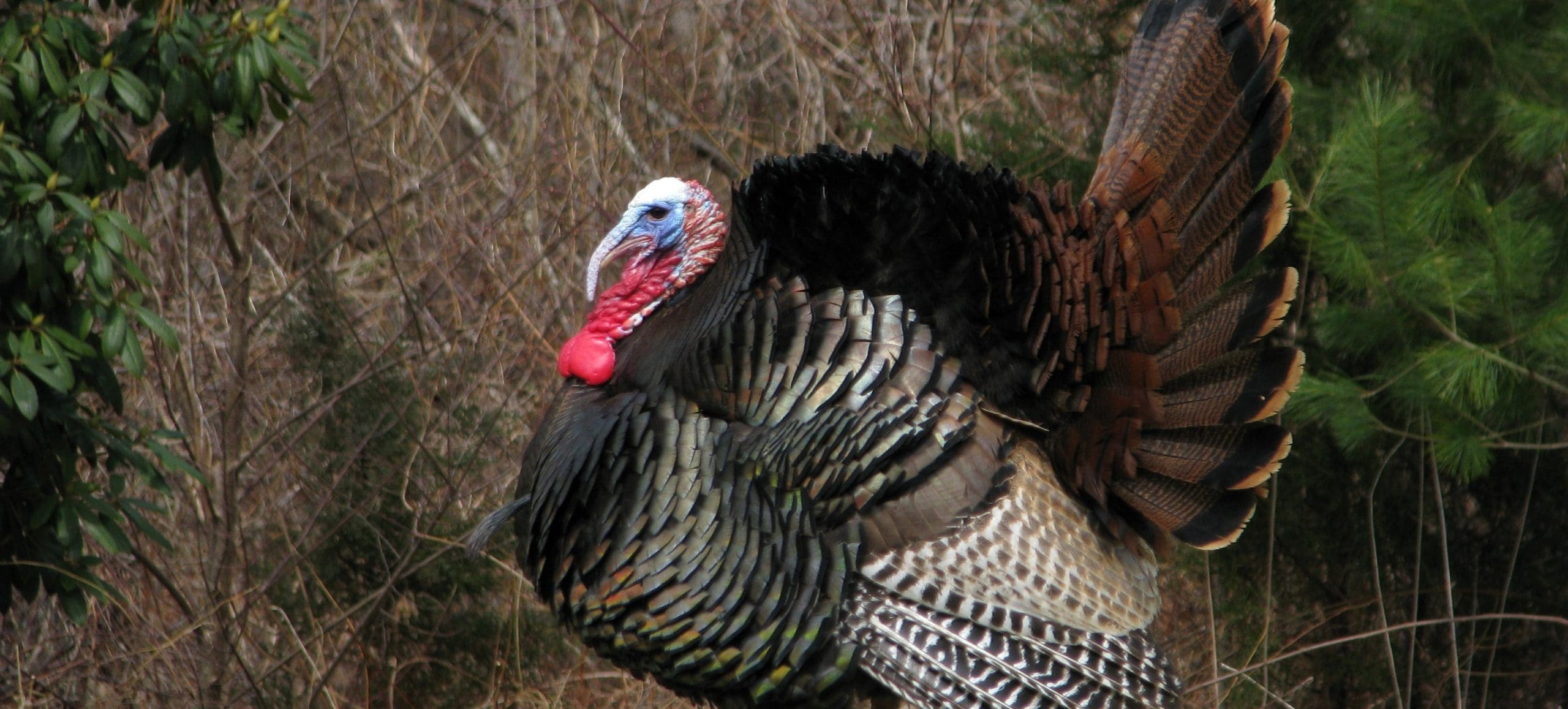Sudan, the world’s last male northern white rhino (Ceratotherium simum cottoni), died Monday 3/19 at Ol Pejeta Conservancy in Kenya. He was 45 years old and is survived by just two females, 27-year-old Najin and 17-year-old Fatu. Despite the two surviving females, sadly neither are capable of breeding due to their own various health problems plus there’s no male to have sex with :(. Details on this devastating event are shared below from John R. Platt via The Revelator.
The northern white rhino’s road to extinction was a long and painful one. The subspecies, which once roamed several nations in central Africa, were heavily poached throughout the first part of the 20th century, mostly to feed the rampant desire for their horns, which have been erroneously linked to traditional health treatments in China.
By 1997 the wild population of northern white rhinos had dropped to just 25 animals, all in Garamba National Park in the Democratic Republic of the Congo. Nine years later that population had fallen to just four lonely animals. Poachers, emboldened and enabled by war and conflict, probably got them, too. Repeated searches in 2007, 2008 and 2011 failed to find any evidence that they had survived.
That wasn’t quite the end, though. Eight aging, non-breeding northern white rhinos remained, all living in zoos: two at the San Diego Wild Animal Park and six at Dvůr Králové Zoo in the Czech Republic.
In 2009 four of the Dvůr Králové rhinos were flown to Ol Pejeta in Kenya, where it was hoped that the feel of their native sun on their backs and earth beneath their feet would inspire them to start breeding and save their species from extinction, possibly by mating and producing hybrid young with related southern white rhinos (C. s. simum).
The simple act of returning to Africa helped immensely. The animals were in “pretty poor state” when they first arrived, but “within six months of their being here their skin had improved, their toenails had improved, the whole condition of the animal had completely changed,” Richard Vigne told me in 2014. “They became semi-wild very quickly.”
And yes, there were some mating attempts, but no pregnancies ensued. Meanwhile, the last captive rhinos at San Diego and Dvůr Králové slowly passed away from old age, as did one of the four at Ol Pejeta, a male named Suni, who expired in 2014.
If you feel overwhelmed with upset like I do, please remember that your daily habits and actions do make a difference. Animal agriculture is the leading cause of species extinction, among so many other things (ocean dead zones, water pollution, and habitat destruction). In addition to consuming planet-positive foods, we can donate to groups making serious headway in stopping poaching. Air Shepherd is one such group I am a fan of. They are using drones for good, by sensing poachers and relaying information to local rangers, so they can get to the animals before poachers do. Their data has proven when they use their drones, poaching stops. Amazing right? I hope you join me in honoring Sudan by taking steps to stop poaching!
Photo Credit: Ami Vitale—National Geographic Creative
While the world is often uncertain, the love of a companion animal is no…




